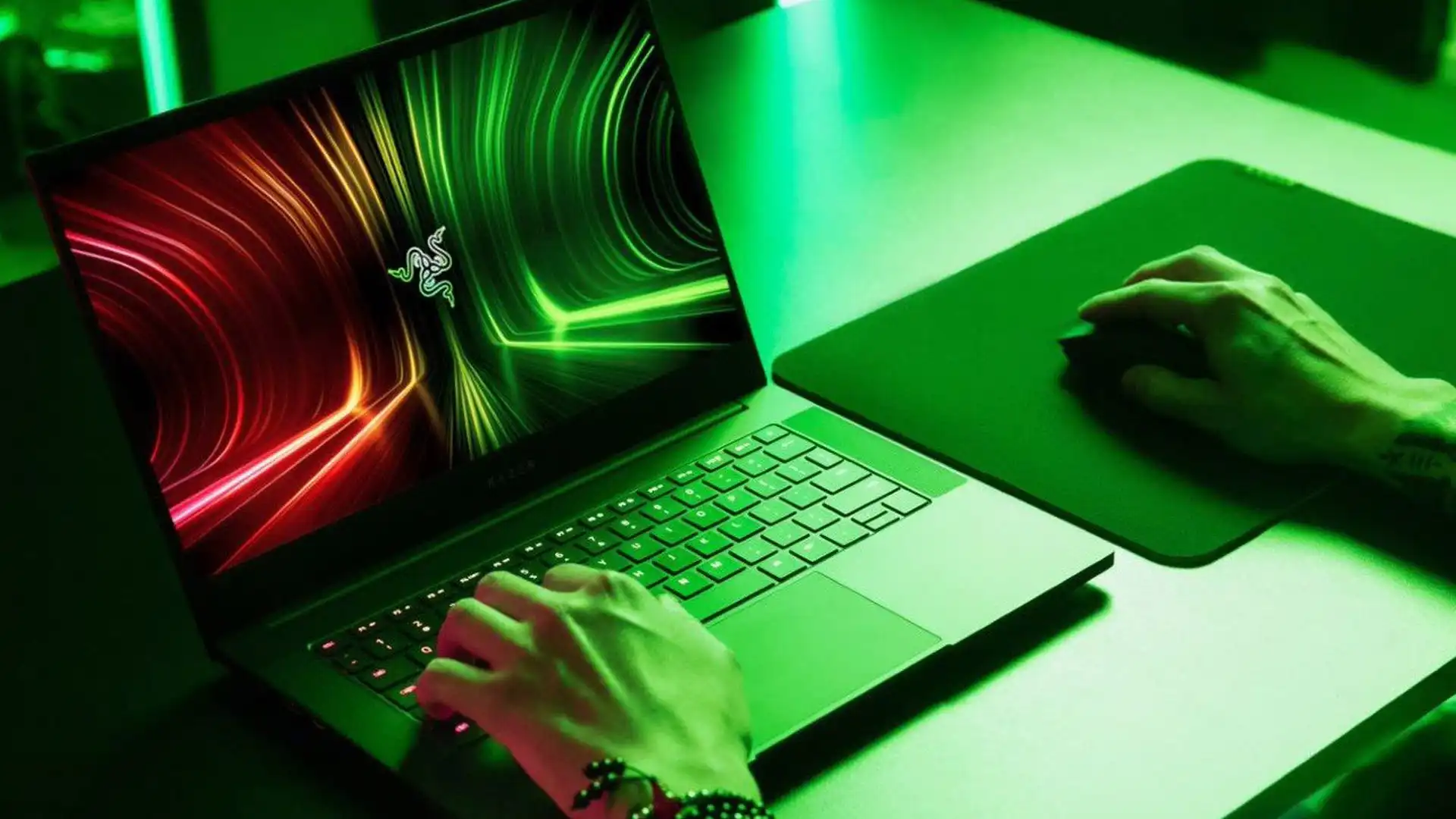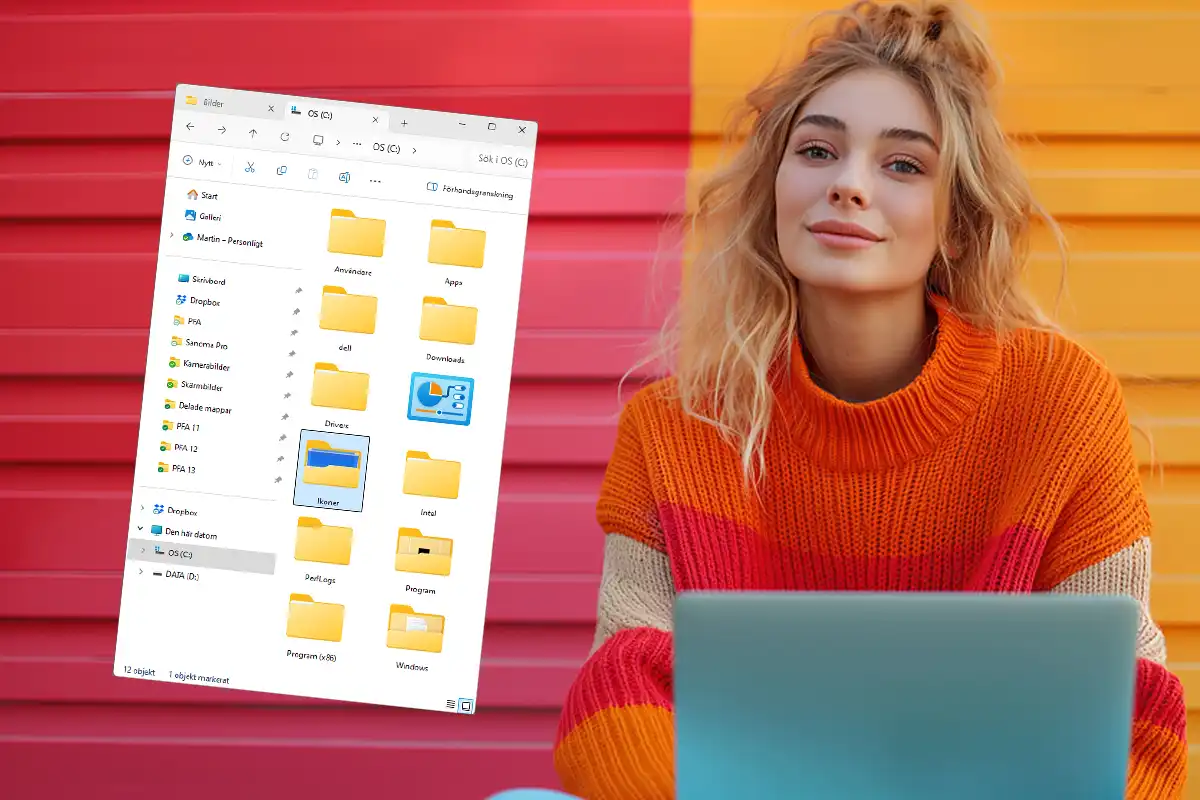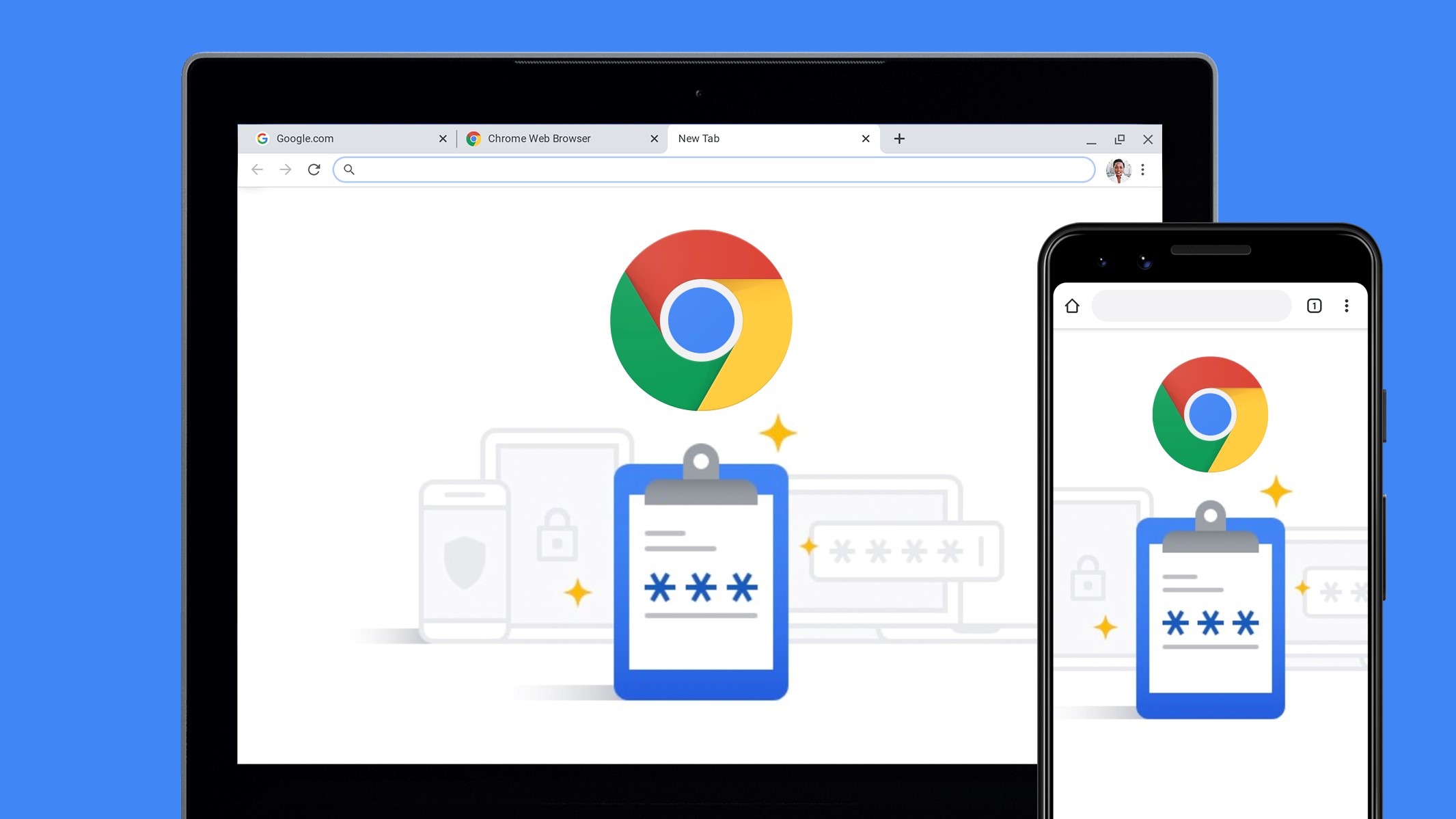Gone are the days of backpacks overloaded with binders and the chronic hand-cramps from trying to write as fast as possible. Nowadays, a good laptop elevates your productivity and allows you to keep all your important lesson materials in one place. Whether you’re new to campus or heading into your final year, having a laptop that’s capable, sturdy, and portable — with good battery life, natch — will help keep you on top of your studies, or gaming (no judgement).
Why you should trust us: It’s in our name: PCWorld. We’ve been reviewing laptops for over 40 years, with exacting standards applied to all facets of the user experience, from performance benchmarks to features to the rigors of daily use. Our experts know their stuff and have curated a comprehensive list of the best laptops for college students, with their particular needs in mind.
After you finish looking over our recommendations, be sure to hit our daily updated roundup of the best laptop deals to try and score a great laptop on sale. Or check out our roundup of the best laptops for even more recommendations.
Updated July 18, 2024: We added the Samsung Galaxy Book4 Edge ($1,749.99) as an alternative option under our Best Battery Life pick. Not only did it last 21 hours on a single charge, but it also has a bigger screen than our current pick. We’ve also updated our list of recent laptop reviews, so make sure you check those out near the bottom of the page.
Best laptops for college students
Dell Inspiron Plus 14 – Best overall for students
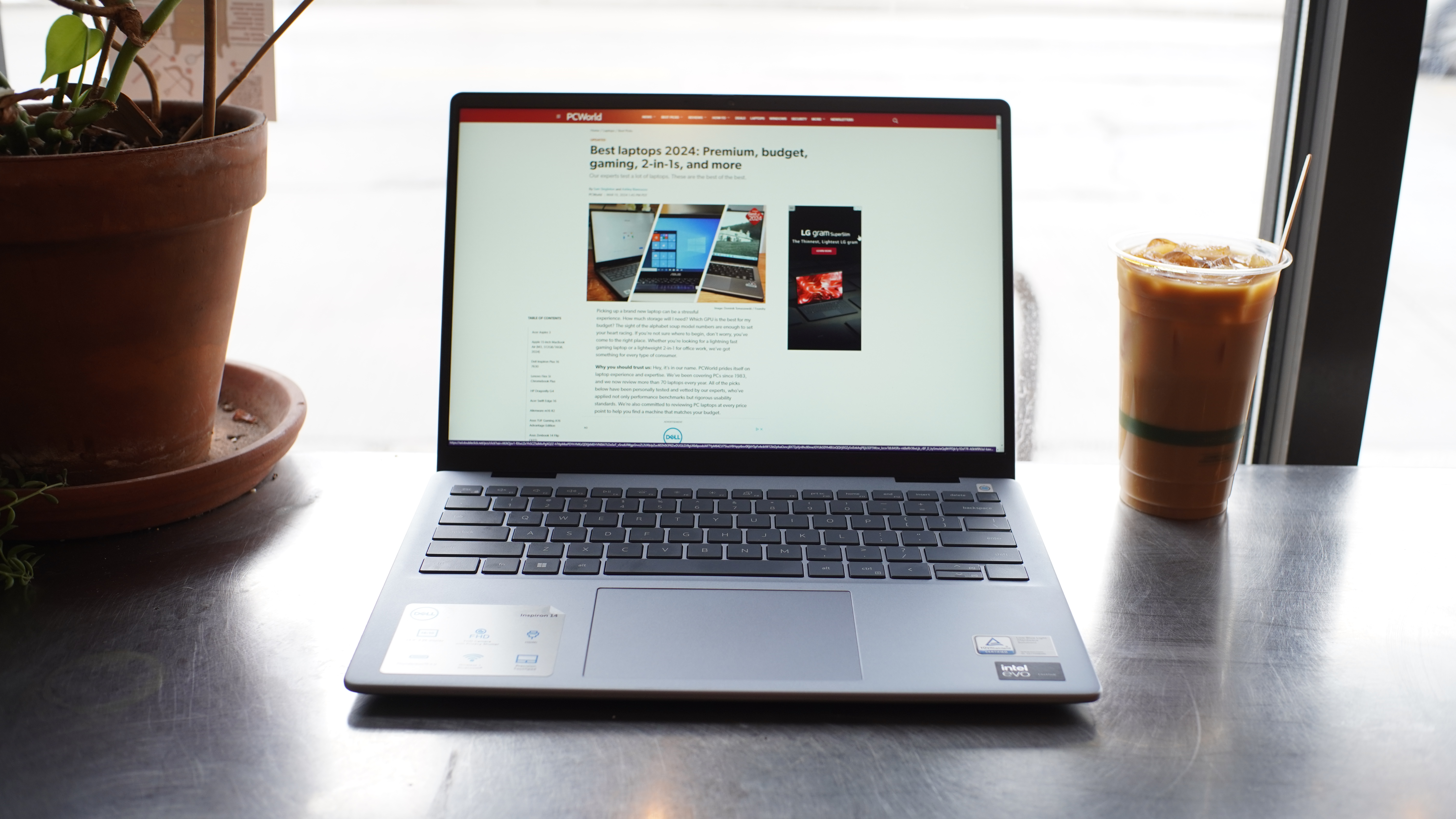
Pros
- Fantastic performance
- Exceptional battery life
- Great typing experience
Cons
- CPU throttles under heavy loads
- No user upgrades
The Dell Inspiron 14 Plus is one of the most well-rounded laptops available right now. You’re getting reliable performance, phenomenal battery life, and a superb-looking display. It only costs $999.99 too, which is several hundred dollars cheaper than our former top pick. With a PCMark 10 score of 7,061, it beat both the similarly spec’d Acer Swift Go 14 and the more expensive Lenovo ThinkPad X1 Carbon. (PCMark 10 gauges how well a laptop handles day-to-day tasks.) It also lasted a whopping 17 hours on a single charge, which is perfect for students looking for a long-lasting machine. You don’t have to go hunting for an outlet between classes, that’s for sure.
Performance and battery life are no doubt impressive, but the 14-inch 1400p display is also worth noting. According to our review, “the display is exceedingly well suited to office work and static imagery.” We measured a peak brightness level of 418 nits, which is plenty bright for writing papers and browsing the web. Plus, thanks to the anti-glare coating on the display, you can use this laptop in more natural lightning environments.
Who should buy the Dell Inspiron Plus 14
Students looking for a well-rounded and long-lasting laptop. The design is a bit boring, sure, but its hardware capabilities and long battery life make up for the staid aesthetics. You can’t really get much better than this–especially for $999.99.
Read our full Dell Inspiron 14 Plus review
Asus Zenbook 14 OLED – Best laptop for students runner-up

Pros
- Robust build quality
- Attractive OLED touchscreen
- Good CPU and integrated GPU performance
- Amazing battery life
Cons
- Blah design
- Keyboard isn’t memorable
- Mediocre connectivity
Why we like the Asus Zenbook
The Asus Zenbook 14 OLED really dazzled us with its peppy processor performance, outstanding battery life, and sublime OLED touchscreen display. Movies and games “look realistic and vibrant” on the 14-inch 1200p display and the 75 watt-hour battery ran for a whopping 16 hours on a single charge. This result really blows away competitors like the Lenovo Slim 7 14 Gen 9 and the HP Pavilion Plus Laptop 14. As for how it fares in the performance department, the Asus Zenbook 14 OLED is plenty fast during day-to-day tasks such as web browsing, chatting over video, and so on, delivering benchmark scores just a bit below our top pick.
Who should buy the Asus Zenbook
The Asus Zenbook 14 OLED is a fantastic choice for students because it offers outstanding battery life, speedy overall performance, and a lovely OLED display. It’s also cheaper than our current top pick. That said, it’s a runner-up for a reason. The Dell Inspiron 14 Plus, which is still the reigning champ, is the more well-rounded option of the two. It has twice the storage, a higher resolution screen, and a better keyboard. However, if you’re looking to save a hundred bucks or so, the Asus Zenbook 14 OLED is still a great option.
Acer Aspire Go 15 – Best budget laptop for students
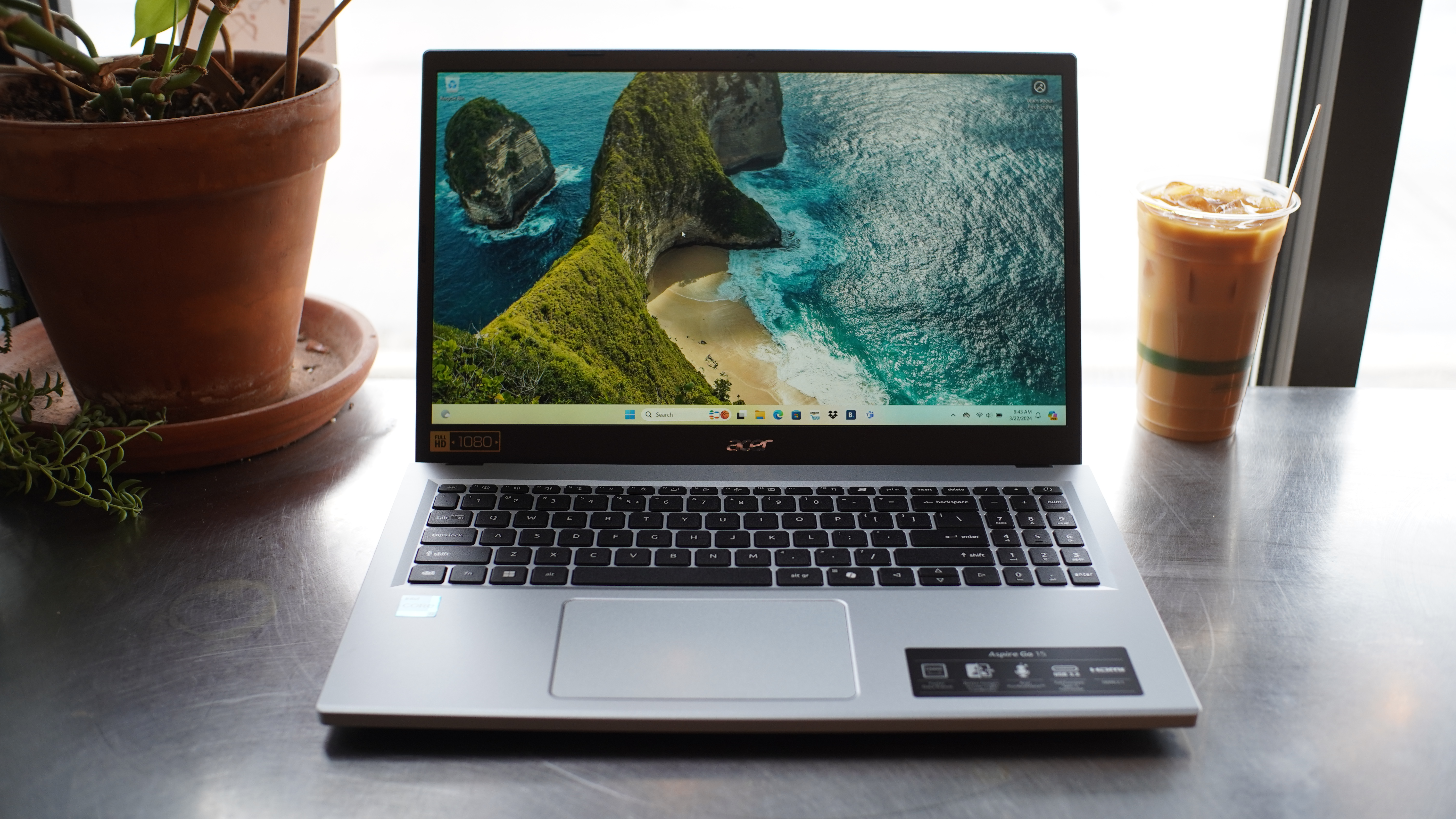
Pros
- Affordable
- Decent battery life
- Good display visibility
Cons
- Big and bulky
- Cheap build
- Limited performance
Why we like the Acer Aspire Go 15
The Acer Aspire Go 15 is a great choice for students on a tight budget. The power efficient Intel Core i3-N305 is capable of handling day-to-day tasks such as watching Netflix, surfing the web, writing papers, and more. This laptop also managed 12 hours of battery life on a single charge, which is more than a full school day. Connectivity options aren’t too shabby, either. You’re getting one USB-C 3.2 Gen 2 with Power Delivery and DisplayPort, two USB-A 3.2 Gen 1, one HDMI, one 3.5mm combo audio, one Kensington lock slot, and one DC barrel jack.
Who should buy the Acer Aspire Go 15
Anyone that needs an affordable laptop with decent performance. The 53.9 watt-hour battery will last you most of the day and the CPU has enough power for daily tasks. The 15.6-inch 1080p display also boasts good visibility and the keyboard offers a comfortable typing experience. It doesn’t have all the fancy features you’d see on a high-end machine, but some folks don’t need all that extra noise. If you’re on an ultra-strict budget, then the Acer Aspire Go 15 is absolutely worth picking up.
Lenovo Flex 5i – Best Chromebook for students
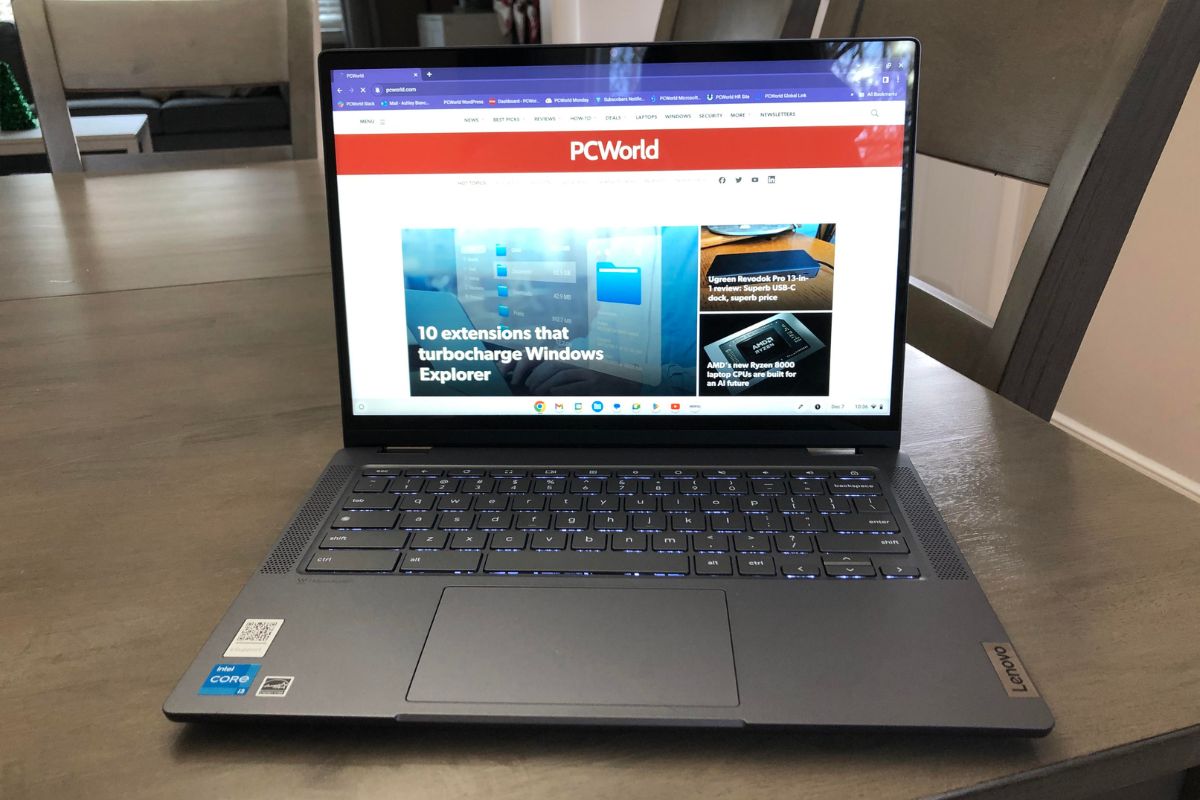
Pros
- Great build quality
- Vibrant touchscreen display
- Fast performance
- Nice typing experience
Cons
- Stylus not included
- Average battery life for a Chromebook
- Heavier than expected
Why we like the Lenovo Flex
The Lenovo Flex 5i is a great Chromebook because of its convertible design, fast performance, superb typing experience, and touchscreen display. The chassis has a luxurious aluminum finish on it, which makes it feel three or four times as expensive. The 360-degree hinge that connects the display to the rest of the laptops feels strong and like it won’t wear out anytime soon. The keyboard is also a dream to type on and easy to adjust to, and the 1200p display produces sharp, colorful visuals. Sure, it’s heavier than we expected right out of the box and the stylus isn’t included, but those are small trade-offs in the grand scheme of things. Overall, this is a really well-rounded machine.
Who should buy the Lenovo Flex
We feel as though the Lenovo Flex 5i is a good option for those who prefer using Google’s ecosystem and can handle mostly working online. The beautiful touchscreen display and the convertible design really gives it the edge over other Chromebooks and even some Windows laptops, as you usually see those features in machines that cost much more. While the nine hour battery life is a little below average for a Chromebook, it’ll still last you a full school day and then some. At the end of the day, the Lenovo Flex 5i’s list of compromises is quite small.
Alternative option: If you’re dealing with an unforgiving budget (been there), the Acer Chromebook Plus 514 ($249.99) is worth picking up. It’s about $100 cheaper than our current pick and it comes with loads of connectivity options as well as an spacious keyboard and a sophisticated design. It’s not a 2-in-1 laptop like Lenovo Flex 5i Chromebook Plus, but I wouldn’t consider that a deal-breaker, especially if you prefer traditional clamshells.
Microsoft Surface Laptop 7 – Best battery life
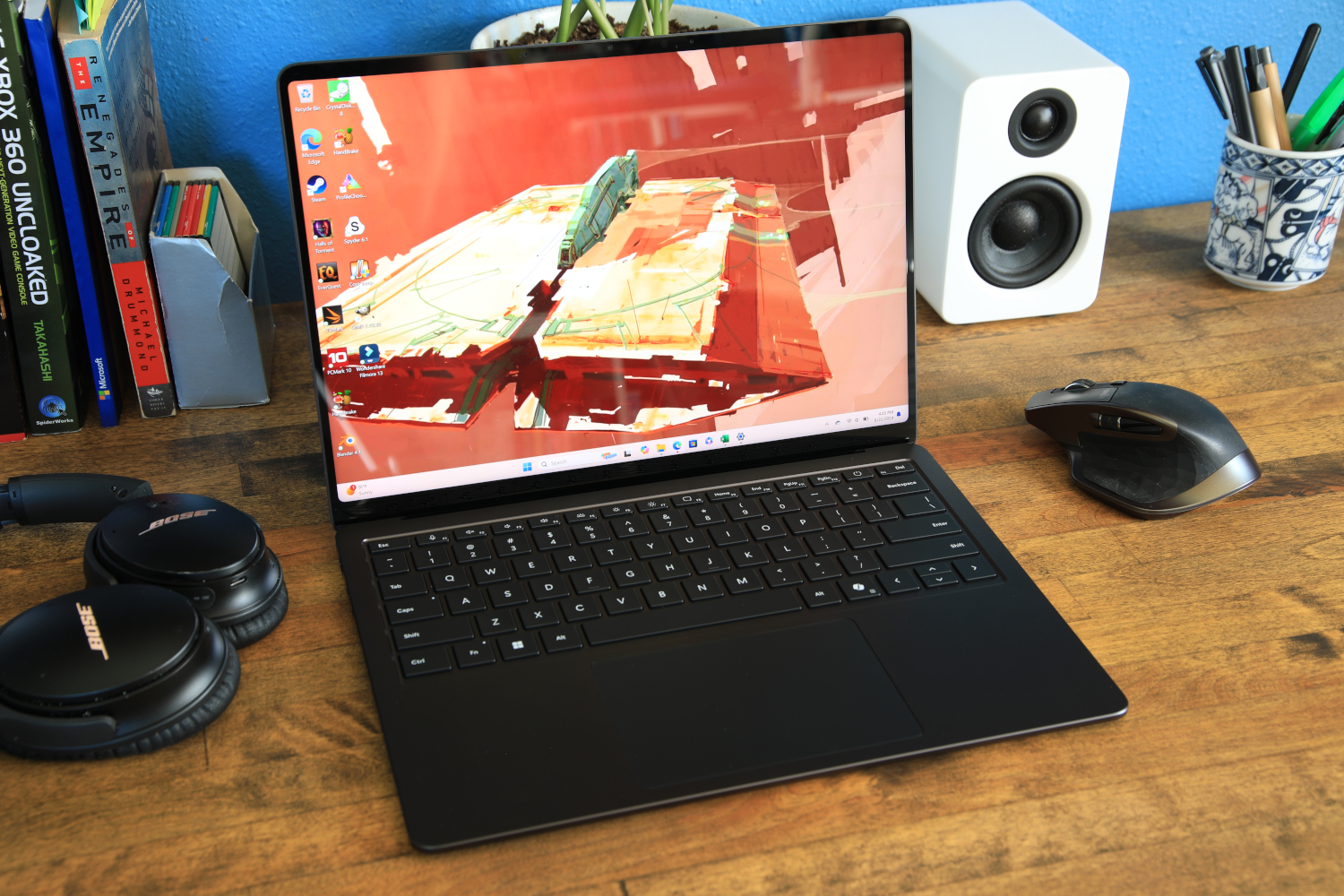
Pros
- Attractive, slim, and light
- Class-leading battery life
- Excellent wireless connectivity via Wi-Fi 7
- Good performance in real-world situations
Cons
- Vague keyboard falls short of competitors
- IPS touchscreen’s image quality can’t compare to OLED
- Gaming performance doesn’t hold up
Why we like the Microsoft Surface Laptop 7
The Microsoft Surface Laptop 7 is one of the first laptops to release with the new Qualcomm Snapdragon X Elite processor and boy, is it power efficient! We logged 20 hours of battery life on a single charge, which is absolutely bananas. In addition to the top-tier battery life, you’re also getting phenomenal wireless connectivity via Wi-Fi 7 as well as reliable casual use performance during. Our review unit cost $1,999.99, which is pretty high for most folks, but you can get the base configuration for $999.99. The base configuration comes with a Snapdragon X Plus processor, 16GB of RAM, and 126GB of SSD storage, so it’s totally capable of handling day-to-day tasks.
Who should buy the Microsoft Surface Laptop 7
Anyone that needs a long-lasting laptop! In addition to the insane battery life, the laptop itself weighs just under three pounds, which means you can take it with you from class-to-class. The 13.8-inch touchscreen also comes with a sharp 2304×1536 resolution and a fast 120Hz refresh rate. It’s not OLED, but it’s still a good display. The bezels are also a lot smaller than the previous model’s, so you’re getting more screen this time around. Overall, this is a truly impressive offering from Microsoft.
Alternative option: If you’re looking for a bigger OLED screen, the Samsung Galaxy Book4 Edge ($1,749.99) is definitely worth considering. It boasts 21 hours of battery life on a single charge (one hour longer than our current pick) and a 16-inch OLED display with a resolution of 2880×1800 and a refresh rate of 120Hz. That said, it’s heavier than our current pick at 3.42 pounds and the 14-inch base model costs more at $1,349.
MacBook Air (M3) – Best MacBook for students
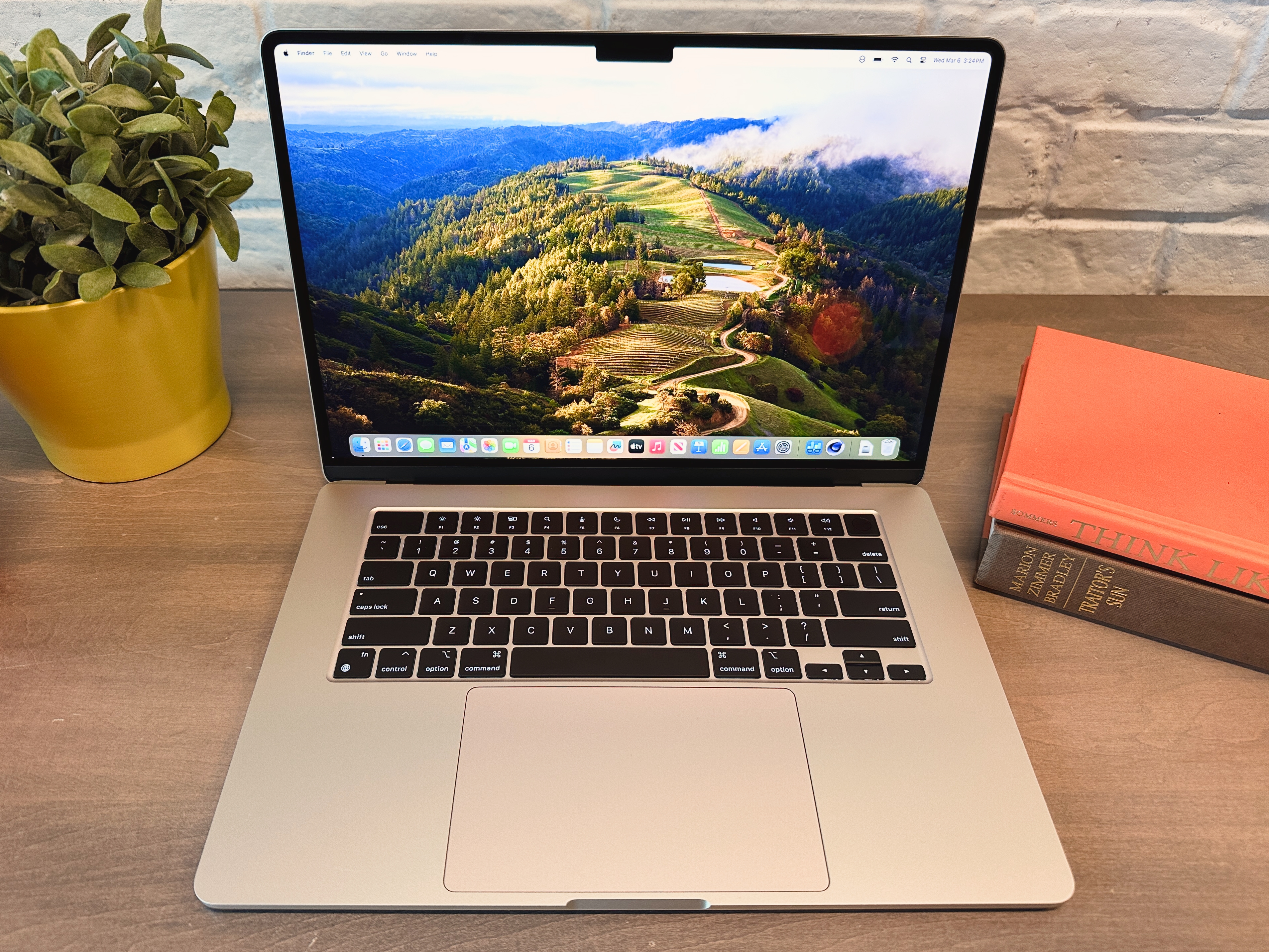
Pros
- Excellent battery life
- Great combination of price, features, and performance
- 256GB SSD is now two NAND chips, maintaining performance
Cons
- Expensive memory upgrades
- Dual external display support requires closed lid
Why we like the MacBook Air
From the outstanding battery life to the spacious Liquid Retina display, the MacBook Air (M3) received high marks across the board. It comes with an 8-core CPU (M3) and a 10-core GPU as well as two Thunderbolt 4 ports and a 66.5 watt-hour battery. Performance is similar to the MacBook Pro (M3), which means it can blitz through school work and casual use tasks. The only difference between the two is that the MacBook Air doesn’t have fans, resulting in quieter operation. This laptop also managed a whopping 19 hours on a single charge, which is great news for those with jam-packed schedules and have zero time to plug into the nearest outlet.
Who should buy the MacBook Air
Anyone who prefers MacOS over other operating systems! The battery life is incredible and the laptop itself weighs just a little over three pounds, which means you can easily take it anywhere with you. The $1,299 price tag is also reasonable for the performance and features. However, the 8GB of RAM is light compared to Windows-based alternatives.
Acer TravelMate P6 – Best ultraportable for students
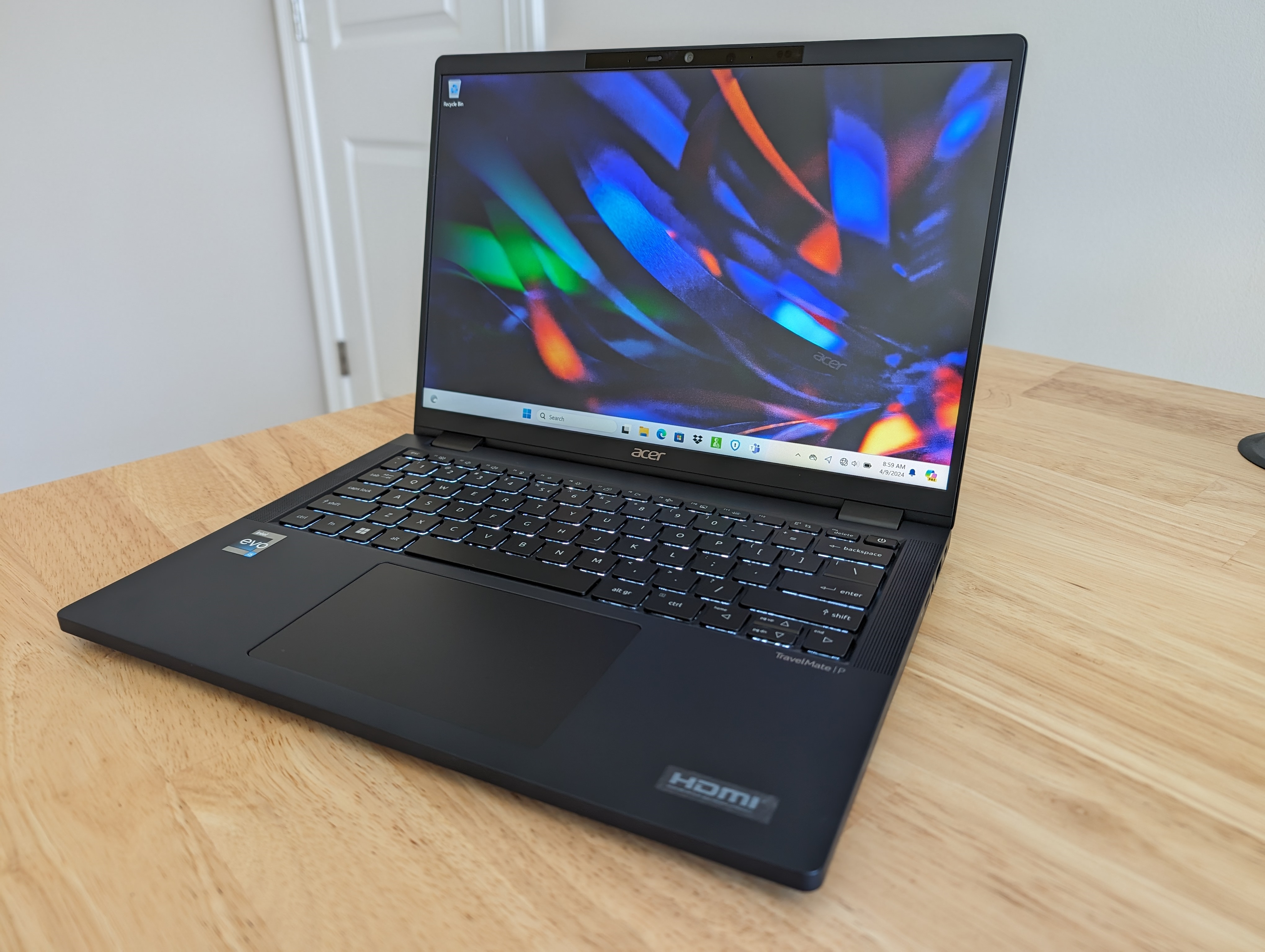
Pros
- Long battery life
- Light and portable
- A good price for a business laptop
Cons
- Keyboard is a tad mushy
- No NPU for future Windows AI features
- Consumer laptops deliver similar specs at a lower price
Why we like the Acer TravelMate
The Acer TravelMate P6 is so lightweight that it might just float up into the stratosphere. It weighs just 2.65 pounds and is made of magnesium-alloy, which is a very light yet durable material. This is the kind of laptop you can easily toss in a bag and take with you from class to class. The 65 watt-hour battery also lasted nearly 13 hours on a single charge — more than a full school day! In the performance department, thanks to the Intel Core i5-1335U CPU, it’s equipped to handle coursework and day-to-day tasks. In fact, it managed a respectable Cinebench R20 score of 3,065, which isn’t far behind the more powerful HP Pavilion Plus.
Who should buy the Acer TravelMate
The Acer TravelMate P6 is a good option if you’re looking for a powerful, lightweight laptop. In addition to the slimmed-down form factor, it also features a 1080p webcam with a physical privacy shutter and a 14-inch 1200p display with a 16:10 aspect ratio. The taller aspect ratio gives you more room to scroll through webpages and the 1080p webcam will make you look your best during remote sessions. Plus, the backlit keyboard offers a comfortable typing experience. What more could you ask for?
Alternative option: If you’re able to stretch your budget, you should consider picking up the Dell Latitude 7450 Ultralight ($2,663 at Dell). It weighs less than current pick at just 2.33 pounds and it has more RAM (32GB), a more efficient processor (Intel Core Ultra 7 165U), and a higher resolution display (2560×1600). That said, it’s more expensive than the Acer TravelMate P6 and may not be the best option for the budget-conscious.
Asus TUF Gaming A16 Advantage Edition – Best gaming laptop for students

Pros
- Impressive battery life
- Gorgeous 16:10 display
- Rugged chassis
Cons
- Keys feel a bit soft
- 720p webcam is disappointing
Why we like the Asus TUF Gaming
The Asus TUF Gaming A16 Advantage Edition is something of a rare gem in the sand dune. This specific model exhibits strong graphics performance as well as long battery life, which is unusual for a gaming laptop. Most gaming laptops last only a couple of hours on a single charge. Well, the Asus TUF Gaming A16 Advantage Edition and its 11 and a half hours of battery life is out here changing the script. That’s more than a full school day.
Also, thanks to the AMD Ryzen 7 7735HS CPU and the AMD Radeon RX 7600S GPU, it also managed 123 frames-per-second in the Rise of the Tomb Raider benchmark. That’s pretty darn good, especially for a sub-$1,000 gaming laptop.
Who should buy the Asus TUF Gaming
The Asus TUF Gaming A16 Advantage Edition is a great option for those who like to game after class. The pricing is reasonable and you’re getting reliable graphics performance as well as a spacious keyboard and decent battery life. It’s also a good purpose machine, so you can use it for coursework and day-to-day productivity. If you’re a gamer who wants Nvidia features like DLSS or advanced ray tracing, however, this all-AMD system won’t cut it — opt for the alternative below instead.
Alternative option: The Lenovo LOQ 15 ($849) stands as another solid budget gaming laptop option. It’s more than capable of 1080p gaming, with an RTX 4060 GPU and access to Nvidia features like DLSS, while the design is very sci-fi inspired. That said, it didn’t nab the top pick because of the poor battery life (not unusual for a gaming laptop) and limited port selection.
Recent laptop reviews
- Acer Swift Edge 16: Acer’s Swift Edge 16’s low weight and good performance makes it a solid travel companion, though a small battery holds it back.
- Samsung Galaxy Book4 Edge: The Samsung Galaxy Book4 Edge is an excellent Snapdragon X Elite-powered PC with a beautiful display, long battery life, and great build quality. But you’re paying extra for high-end Snapdragon X Elite hardware on the 16-inch model, and it doesn’t deliver the big performance bump you might expect.
- Lenovo ThinkBook 14 2-in-1: The Lenovo ThinkBook 14 2-in-1 Gen 4 offers solid performance and a great value for anyone who needs a laptop to get work done.
- MSI Raider 18 HX: The MSI Raider 18 HX boasts a humongous screen as well as all the ports you could imagine, but the windy roar of the fans combined with the high price tag may deter some folks.
How we tested
The PCWorld team puts each and every Windows laptop through a series of benchmarks that test GPU and CPU performance, battery life, and so on. The idea is to push the laptop to its limits and then compare it against others we’ve tested. Chromebooks, on the other hand, go through a series of web-based tests. It wouldn’t be fair or possible to run the same kinds of tests on a Chromebook, as they’re Chrome OS-based machines.
Windows laptops
- PCMark 10: PCMark 10 is how we determine how well the laptop handles lighter tasks like web browsing, word processing, spreadsheets, and so on.
- HandBrake: HandBrake is more intensive than PCMark 10. It basically measures how long a laptop’s CPU takes to encode a beefy 30GB file.
- Cinebench: Cinebench is a brief stress test of the CPU cores. It does this by rendering a 2D scene over a short period of time.
- 3DMark: 3DMark checks if 3D performance remains consistent over time by running graphic-intensive clips.
- Video rundown test: To gauge battery life, we loop a 4K video using Windows 10’s Movies & TV app until the laptop dies.
Chromebooks
- CrXPRT 2: The CrXPRT 2 benchmark tests a Chromebook’s battery life.
- Speedometer 2.0: This test determines a Chromebook’s web browser performance. It simulates this by adding, completing, and removing a to-do list.
- Basemark Web 3.0: This benchmark gauges how well a Chromebook can handle web-based applications.
- Kraken 1.1: Kraken 1.1 is a JavaScript performance benchmark.
- Jetstream 2: Jetstream 2 is a combination of WebAssembly and JavaScript benchmarks. This is a way to gauge how well a Chromebook runs advanced workloads.
What to look for in a laptop for college
The first thing to consider is budget. How much are you willing to spend on a laptop? If you’re working with an inflexible budget, Chromebooks are a good option. They’re affordable and designed to handle everyday tasks like writing papers, working on spreadsheets, and so on. Chromebook prices can range anywhere from $200 up to $1,000. If you want to spend a bit more, laptops with convertible touchscreens (otherwise known as 2-in-1s) offer a great deal of functionality. You can flip the screen around and use it like a tablet or prop it up like an easel for watching movies.
Things like navigating your e-mail or watching Netflix will require more RAM. We recommend springing for 8GB of RAM or more. 4GB of RAM is fine and good for web browsing and basic office work, but 8GB is better for having more tabs open and whatnot. Plus, applications like Google Chrome and Spotify tend to eat up a lot of memory. Most people can get by with 4GB in a pinch if you’re on a tight budget, but you won’t be able to multitask as much.
The final thing is a decent keyboard. In college, you’re going to be spending a lot of time typing. Depending on your personal preference, you may want either a full or short travel keyboard. Mechanical keyboards, for example, normally have longer travel. This helps prevent accidental keystrokes. The keys also give a lot of tactile feedback, as they bounce back after they’re pressed down.
FAQ
Which laptop size is best?
This is mostly personal preference. Students who bring their laptops to class or intend to travel a lot should consider a smaller, more portable size. Anything in the neighborhood of 13- to 14-inches is recommended. However, if you want to use your laptop for gaming, then you should consider something in the 15- to 17-inch range. It’s also important to keep in mind the weight of the laptop before buying it. Ultra thin laptops can weigh a featherlight two pounds while hefty gaming rigs top the scales at three or four times that—not exactly something you want to carry in a backpack everyday.
How long should a laptop last on a single charge?
If you’ve got a jam-packed schedule, you’ll probably be running from class to class with very little downtime in between. That’s why we recommend a laptop with a long-lasting battery. We recommend something that’ll last 7 to 10-plus hours on a single charge, unless you want a notebook that can play games on the side—gaming laptops are notorious for their shorter endurance, even during everyday tasks. That 7 to 10 hours is a good figure if you plan on taking your laptop with you everywhere.
What about processing power?
Most students will be able to get by with an Intel Core i3 or i5 processor. You don’t need anything mega powerful for everyday tasks and school work. However, if you’re using more graphically demanding programs on the regular, then you may want to spring for an Intel Core i7 or i9. It all really depends on your workload.
For more specifics regarding the hardware you want inside your laptop, be sure to check out our comprehensive guide on how to buy a budget laptop without getting screwed, as well as our broader cheatsheet on what to look for in a laptop CPU and GPU.

